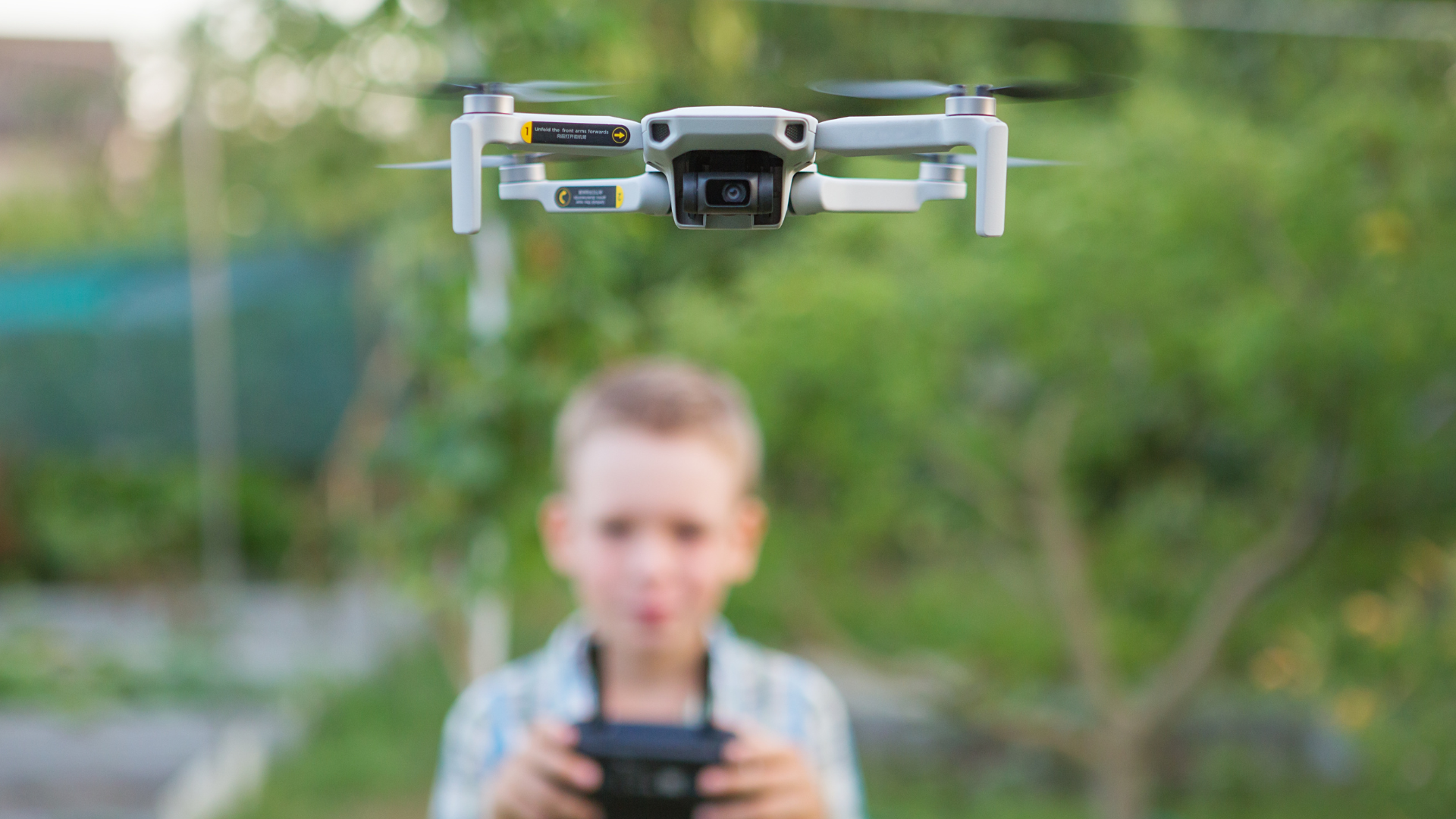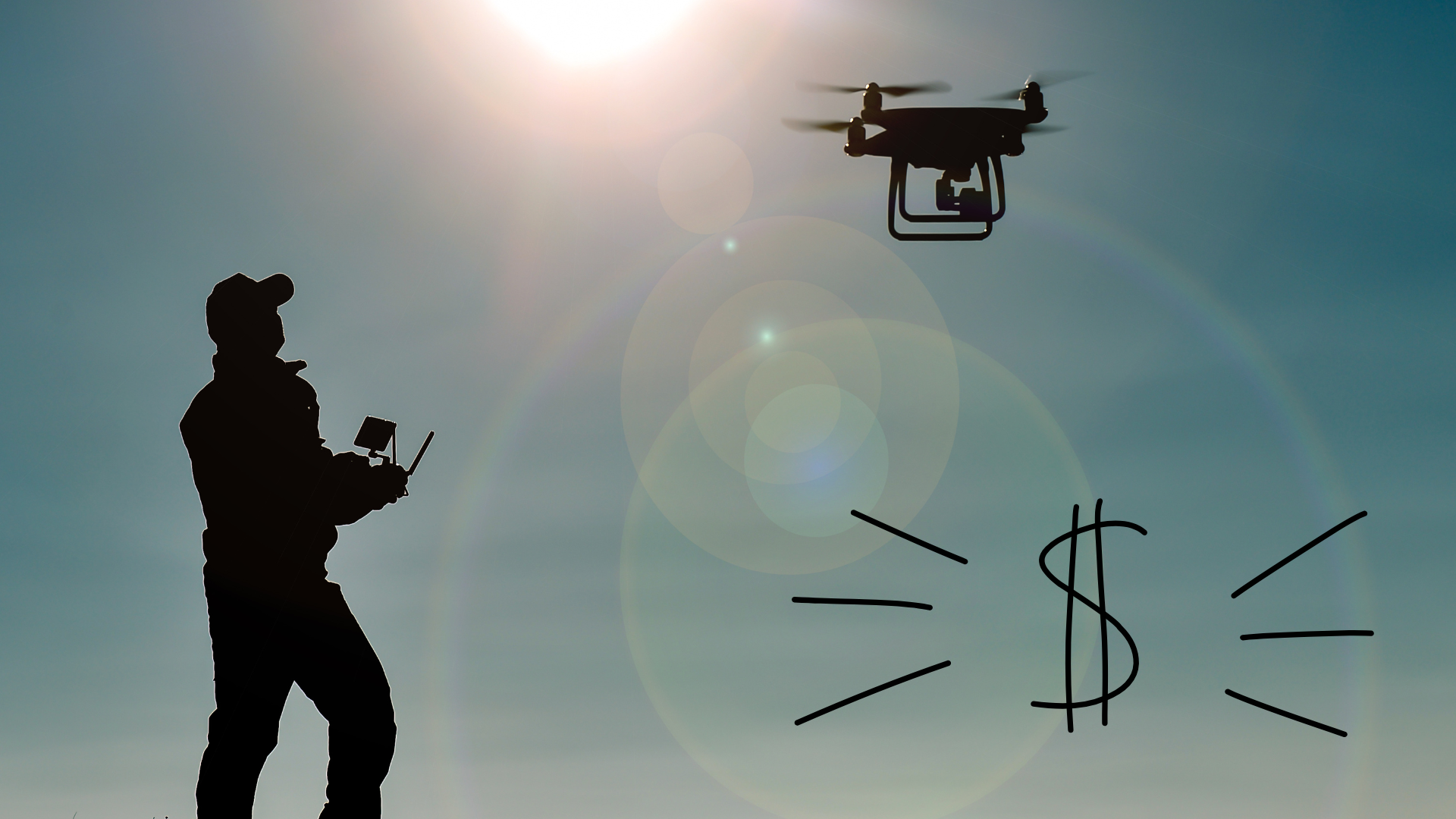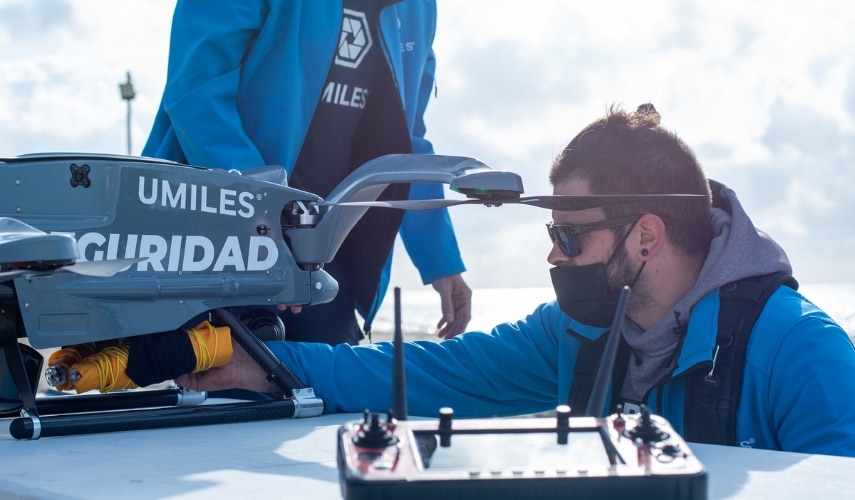Can I fly a drone on the beach? This is one of the questions frequently asked by those who want to get impressive aerial shots in an environment of sun and sea. But before flying a drone on a beach, it is important to know the regulations and rules that apply to flying RPAS drones in this type of area.
Regulations for the use of drones on beaches in Spain
Current regulations indicate that you can fly a drone on the beach as long as you take into account the AESA 2023 drone regulations and standards. Therefore, the following are the highlights of the current regulations:
- Areas within aerodrome safety distances: Drones are not allowed to fly except with aerodrome/airport coordination.
- Flight times: You can fly both during the day and at night. However, you should be aware that night flights are subject to certain requirements: the drone must be equipped with navigation and anti-collision lights, as well as a flashing green light. In addition, the weather conditions for taking off must be favourable (no fog, no wind, no rain).
- Maximum flight height: The height of 120 metres from the lowest point on the ground may not be exceeded.
- Drone vision: The drone must always remain within the pilot’s line of sight (VLOS). However, if you are licensed to fly in STS-ES-02 national standard scenarios, you can move the drone further away from the pilot’s view (BVLOS).
- Respect for privacy: You may not film private individuals without their permission. The Personal Data Protection Act must be respected.
Find out how to obtain a drone licence in Spain in case you need to fly a special type of UAS in our professional drone pilot course.

How to fly a drone on the beach?
In addition to knowing the regulations and rules that apply to flying drones on the beach, it is important to take into account other aspects when doing this type of activity, as the conditions may be harmful to the drone or you may incur fines due to ignorance.
This is why you should take the following points into account:
- Protect your drone: Sand poses a risk to drones, so you should avoid getting the grains to damage the device. It is best to take off and land the drone by hand or with a take-off platform.
- Avoid bad weather: Wind and rain can complicate drone flight. It is therefore important to keep an eye on weather forecasts to avoid wasting time. Also, due to the intense sun on the beach, it is advisable to use an ND filter and avoid flying in low or high temperatures.
- Find out about Special Protection Areas for Birds (SPAs): Many of the best beaches are categorised as SPAs, which does not mean that you cannot use a drone on the beach, but you must apply for certain permits before doing so.
- Check flight restrictions: Flight restrictions are changeable, so it is advisable to use virtual maps such as ENAIRE drones to read NOTAMs or check if there are any impediments to carry out the project on the beach.
If you do not know what a NOTAM is, you can go to our blog article where we explain in detail what this type of notifications are about.
How to fly a drone in high winds?
If you are planning to fly a drone on the beach in strong winds, there are some important factors to consider. For example, the maximum speed of your drone is essential to know how much wind it can withstand.
If the wind is stronger than two-thirds of the drone’s maximum speed, it is likely that the drone will not be able to fly well. Also, take-off and landing can be dangerous in very windy conditions, as the drone can easily be displaced and can cause it to collide with someone.
Therefore, during the flight, try to find places where the wind is blocked by a tall structure such as a tree or building, and don’t fly too high, as the higher the altitude the stronger the winds will be.
Which beaches can I fly my drone over?
There are many options for flying over urban beaches with drones, some of which require very specific permits, but others allow you to do so with fewer complications. It is true, however, that when flying in urban areas, it is necessary to notify the Ministry of the Interior at least 10 calendar days prior to the operation. That is why we have compiled three of them, so that you can take spectacular beach images with your drone, as long as you comply with all the above conditions that we have already mentioned.

A Lamiña Beach
It is a fine white sandy beach 800 metres long and is located next to the mouth of the Miño river and on the border between Spain and Portugal. There are no restrictions on flying drones in the area and no specific permission is required, just be aware of the wind that can sometimes make flying difficult. It is also part of the Portuguese Way.
Santa Marina Beach in Ribadesella
This is a beautiful beach at the mouth of the river Sella, surrounded by modernist and Indian villas. At its western end there are remains of dinosaur footprints, perfect for taking photos with a drone. Moreover, no special permits are required to fly drones on the beach.
Zarautz Beach in Guipuzcoa
This is the largest beach on the Basque coast and very popular with surfers. It also has a lively promenade lined with bars and restaurants that make for beautiful postcard-perfect photography, which does not require special permission to fly and have fun with your drone. However, it does get quite crowded and remember that you will not be able to fly your drone if you jeopardise their safety or violate their privacy rights if your drone has a camera.
If you want to do professional activities with your drone, do not hesitate to contact us, so that we can give you relevant information about the use of drones and the uses to which they can be put. This way you can discover interesting facts such as what photogrammetry is, as well as some tips for taking high-impact aerial photographs with drones.


